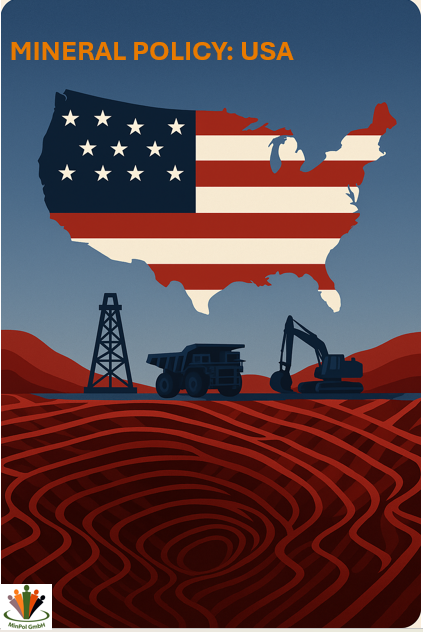Latest Policy Research Report

Explore how U.S. mineral policy is reshaping global supply chains.
This comprehensive country report provides a deep dive into the regulatory, economic, and strategic frameworks that underpin the United States’ approach to critical mineral security. With global demand for rare earths, lithium, cobalt, and other vital inputs rising rapidly, the U.S. is reorienting its domestic mining policy and investment ecosystem to reduce import dependence, promote supply chain resilience, and support its energy transition goals.
Drawing on legal sources, policy analysis, and market data, this report is ideal for:
- Institutional investors evaluating U.S. mining exposure
- Policymakers benchmarking international best practices
- Analysts tracking the geopolitics of critical minerals
- Companies seeking opportunities in extraction, processing, and recycling
Read more about the report
Purchase report
Country Policy Profile Summary
Within USA, Alaska shows a high density of critical minerals, especially in cobalt, rare-earth elements, and antimony, indicating its significant potential for resource extraction in remote areas. The western states—particularly Nevada, Utah, and Colorado—also exhibit diverse mineral concentrations, reflecting both geological richness and current or prospective mining activities.
In the eastern United States, clusters are primarily focused in Appalachian and Northeastern states, with notable distributions of minerals like manganese and graphite, essential for battery production and steel manufacturing.
| United States of America | |
|---|---|
| General: | U.S. mineral production contributed more than 105 billion dollars to the U.S. economy in 2023 — a 4 billion dollar increase over 2022 — according to the Mineral Commodity Summaries 2024, released by the U.S. Geological Survey. |
| Policy Framework: | 30 U.S. Code § 21a is referring to national mining and minerals policy. |
| Legal Framework: | The Mining Law of 1872, as amended, is the major Federal law governing locatable minerals. This law allows U.S. citizens the opportunity to explore for, discover, and purchase certain valuable mineral deposits on Federal lands that are open for mining claim location (open to mineral entry). |
| Responsible ministry: | U.S. Department of the Interior https://www.blm.gov/programs/energy-and-minerals/mining-and-minerals |
| Permitting procedure: | Internal information (ministry’s website) is available as well external information. |
| Mining potential: | Key minerals are Beryllium, Copper, Iron ore, Barite, Bauxite, Coal, Cobalt, Gold, and Lithium. |
Reports, blogs and news update
New report published: Navigate the United States’ mineral policy at the crossroads of security and innovation
MINRIS U.S. Mineral Policy Report offers deep insights into America’s evolving approach to critical minerals—a cornerstone of economic security, clean energy transition, and technological leadership. Available now for purchase This report is essential reading for...
Securing defense critical minerals: Challenges and U.S. strategic responses in an evolving geopolitical landscape
The growing dependence on critical minerals (CMs) for advanced military technologies presents significant and escalating challenges for the United States (U.S.) and its allies. As global competition intensifies and supply chains remain vulnerable to geopolitical...